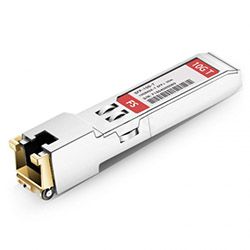
Load balancers are built to help scale up your back end servers, to allow for the growth of users. But what if the load balancer could also grow with you?
In today's world, ever faster network connections are required — But which one do you pick?
The options can be really confusing:
10G? 25G? 40G? Even 100G! Copper? SFP28? QSFP?
Which one will fit in your network now?
And more importantly, Which one will your network support in 5 years time?
Making the wrong choice could be a very expensive mistake
Typically vendors such as Kemp are charging $40K+ for any hardware load balancer with greater than 10G connectivity — So you'd better not do something you'll later regret.
That's why we have flexible options for 1, 10, 25, 40, 50 and 100Gbps networks. And the network cards we use in our appliance are all backwards compatible.
Meaning, if you are currently running 1Gbps network speeds but are planning to upgrade to a fancy new 10Gbps network, you can purchase a 10G load balancer with a 10G network card already installed. But why would I buy for 10 Gigabits if I can only support 1 Gigabit at the moment? I hear you ask...
Backwards compatibility can future proof your network
The backwards compatibility our network cards support means that you can buy a fibre 25G network interface card (NIC) and use any SFP module (which is like an adapter for network cards).
Did you know that you can even run One Gigabit RJ45 copper connections with an SFP module?

Once you are ready to upgrade your network to the fancy new speeds, you can simply replace the module with a 10Gbps SFP+ or a 25Gbps SFP28, this saves you having to purchase a whole new load balancer when it comes to growth.
And, that's why we often recommend the 25G load balancer
Yes, really — we often recommend 25G even if you are no where near that kind of performance level. Why? Because its about the same price as 10G, it has the same form factor and its completely backwards compatible.
But, what about the other choices 40/50/100?
OK, Lets make this really simple — 98% of people don't need them, so unless you know that you do need QSFP then don't worry about it... See this blog about the best 10G switch upgrade path.
Made a mistake? We even let you change your mind!
Yes, you heard that right — Our flexibility is legendary (and something you wont find possible with other vendors). Not only do we have a 90 day money back guarantee. But even if you've had the load balancer for a few years. We can replace the network card at cost price, or you can even buy your own — without effecting your warranty.
So if you change your network from QSFP to SFP28 you don't need to throw away your expensive hardware... Or come up with complicated uplinks that look like spaghetti gone wrong :-).
So what is an SFP and what does it mean for you?
A small form-factor pluggable transceiver (SFP) is a transceiver that converts digital signals to optical signals and vice versa. The SFP is a plug-in module that is hot-swappable, meaning you do not have to replace a whole network card to upgrade your network speeds, it can even be replaced while the device is still switched on. Just like unplugging an ethernet port. For more information, check out this page on the SFP module on the FS community website.
The SFP means that as soon as you're ready to upgrade to faster speeds in your network, then you don't need to buy a whole new load balancer from us, or even a new network card. Simply unplug your SFP from the back of the network card and replace it with the faster SFP.
If you're unsure of which SFP is best for you, you can contact our support or sales team to have the best recommendations for you. Typically most SFPs are compatible with our load balancer. However, the SFP must be the same in the switch and the load balancer, this is more of a limitation with how different SFPs are manufactured.
Note: SFPs can come in different shapes and sizes (SFP, SFP+, QSFP) so if you're unsure contact our sales or support teams to know which size suits you.
Important: The cards are all backwards compatible to the limit of the card, so you cannot use a 10G card for anything above 10G or a 40G card for anything above 40G for example.
















